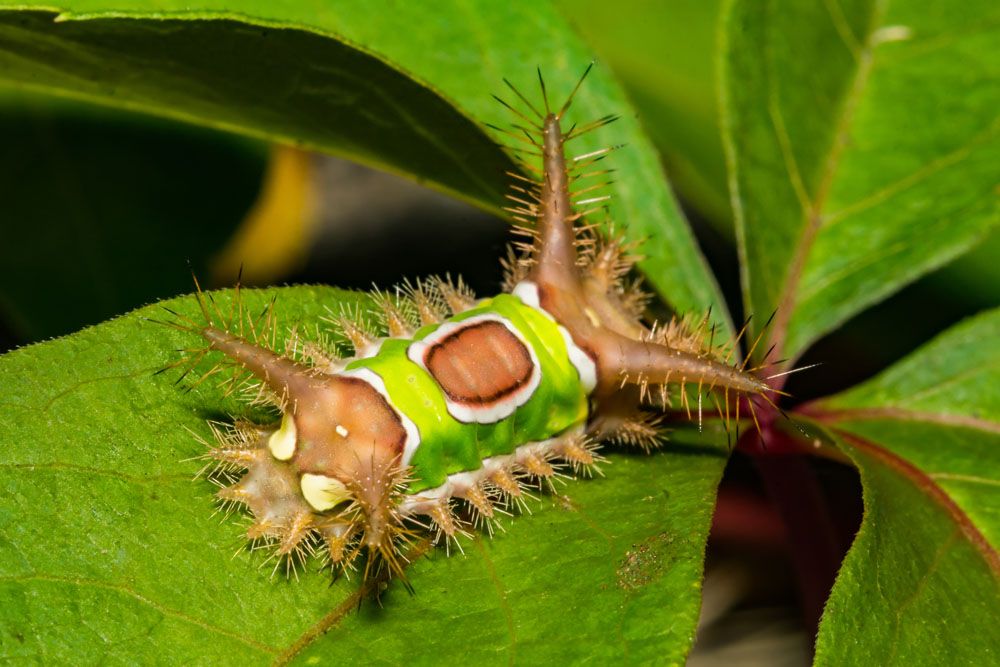
Saddleback Caterpillar – Sibine stimulea
Saddleback Caterpillar – Sibine stimulea
Scientific name: Acharia stimulea (formerly known as Sibine stimulea)
Common name: Saddleback caterpillar
Appearance: Saddleback caterpillar has a green body with brown, orange, or purple ends and a dot in the center surrounded by a white border, giving it a characteristic saddle appearance. They grow up to 20mm long. The entire body is covered with hairs that secrete irritating venom, causing nausea and rash in humans. It also has a pair of fleshy horns on both sides of the body. Adults grow velvety-brown anterior wings and cream-colored posterior wings. They have hooks and suckers which help move around.
Host plants or food: Saddleback caterpillars feed on various plants, including oak, maple, plum, chestnut, kale, lychee, sweet corn, and coral vine. However, they mostly favor ornamental palms for feeding.
Territory: Throughout North America, Mexico, and Eastern United States
Mode of damage: Saddleback caterpillars are leaf chewers; they feed on the upper and lower side of the leaf tissues during the early stages, leaving the veins. This causes dark patches on the leaves. During the last stages, the caterpillars feed on the entire leaves, including the veins.
Habits and life history:
Saddleback caterpillars are active during the warm, moist season from July to October, during which they mate and reproduce.
Females lay eggs on the underside of the leaves, which hatch into larvae in 10 days.
The larvae feed on the underside of the leaf’s epidermis until they turn into a pupa with a hard, light-brown cocoon surrounded by silk webs.
The pupae convert into adults, with females larger than males.
The adhesive hooks, along with the venomous spine, help the caterpillar to stay attached to the surface.
